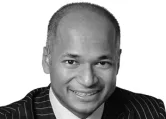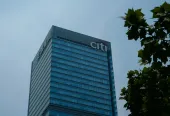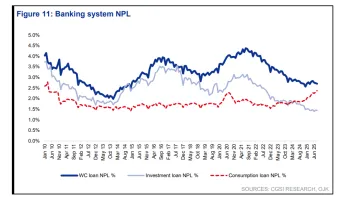Why linking central bank base interest rate to unemployment level is unwise
By Moorad ChoudhryConsultants and others who have perfected the art of talking a lot without saying anything (and getting paid for their efforts) are frequently in the habit of referring to "paradigm shifts", even if not everyone is sure what "paradigm" actually means.
We could be observing a paradigm shift in the art and practice of central banking, but (as with all such shifts) without being aware of it. In years to come students of finance may define "monetary policy" simply as the taxpayer underpinning the private sector economy.
Certainly that is what appears to be happening, ever so subtly, as we move away from crisis to something approaching more stable conditions, but with no accompanying change in the policy response. The Bank of England has followed the U.S. Federal Reserve and decided to link changes in its base interest rate to the rate of unemployment.
The rate is currently at 7.8 percent, but interest rates will not be raised from their current record low until this rate is at 7 percent. The business media has looked at the BoE's own forecast on unemployment (clearly disregarding the historical fact that economic forecasting, whoever is presenting it, is generally as accurate as astrologers' predictions) and seen that it isn't due to hit 7 percent until 2016. Ergo, rates are staying flat for three years.
There are a large number of causal factors that drive the unemployment rate. Some of them are significant, for example labour market policy: if the government was to freeze payroll taxes for a year for all new hires, there would be a big impact. And it would have had nothing to do with the cost of borrowing. An econometrician will tell you that one needs a complex multi-factor non-linear model to model unemployment and its causality with something approaching even 50 percent significance.
The rate could stay above 7 percent for the next 10 years, while asset prices and inflation race away. This is where the Bank's get-out clause kicks in, it can raise rates if other factors dictate. But by then it would probably be too late to stop an unsustainable boom. It is easy to draw a statistical close correlation between unemployment and interest rates, just as it is to infer one between the number of people who get sunburnt on holiday and interest rates.
Linking the two is a departure for monetary policy and one that we should think carefully about. It's meant to be part of the new vogue for "forward guidance" (a superfluity if ever there was one. A bit like "aerial flight" or "wet swimming". Can one have backwards guidance?).
But we'll talk about that in a second. Most students of finance will tell you that a big driver of the last crash was excess cheap liquidity fuelling a housing and other asset bubble, and excess borrowing that caused distress when the bubble burst. What do we have now? Excess cheap liquidity that is being assisted (in the U.K.) by a government subsidy for first-time house buyers. And an equity price bubble that is being fuelled by quantitative easing and near-zero interest rates.
This is all meant to be unwound when the economy "returns to normal", but what's normal? Would you want to bet on central banks getting the timing right? Forward guidance is meant to help stabilize markets because it gives them a strong indication that there will be no tightening of monetary policy for a near-explicit period of time. It's going to do that alright, and then some – the period of "stability" is in fact going to be a period of yet another asset bubble growing. We are seeing signs of it now, in house and equity prices and borrowing levels. That's retail borrowing levels mind you , the corporates are sitting on their cash piles. But it's the corporate sector we want to see growth in. And that sector needs as much help from the supply side of things and labour market policy as it does from monetary policy.
Monetary policy has done its bit. Linking the base rate to unemployment seems to be a lessening of an ability to control events. There are any number of factors that drive the employment rate and we need to be careful in tying the two, especially if it's part of some unnecessary forward guidance policy. If markets can only be stable when one tells them interest rates will be zero for years to come, and experience volatility at any hint that rates may go up, and it has been five years since the crash, then something is going wrong here.
A "free market economy" is supposed to be just that, but it looks like our one is morphing into a "taxpayer backed central bank economy". Now that's a serious paradigm shift.




















 Advertise
Advertise






